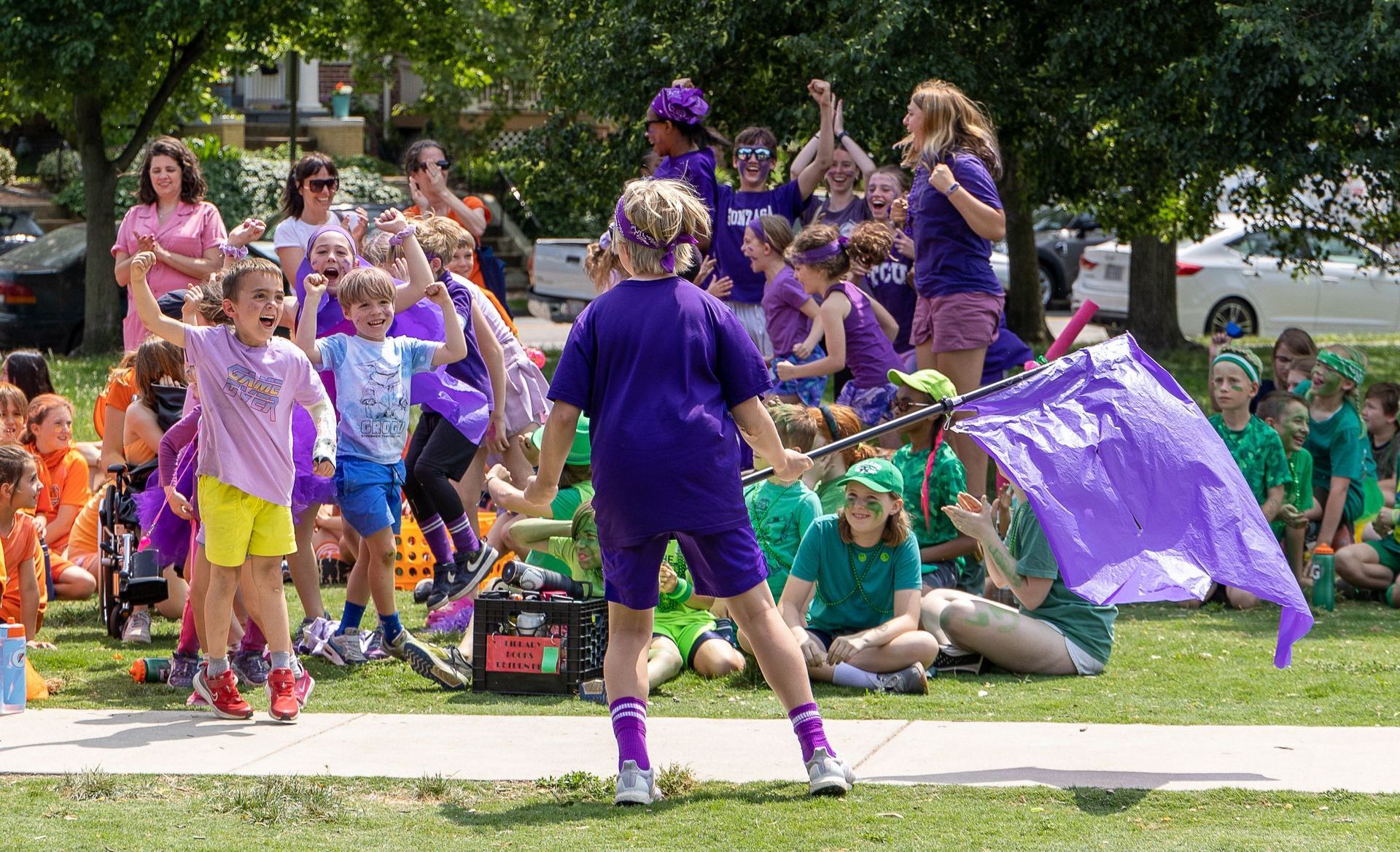
Slide title
Write your caption hereButton
Slide title
Write your caption hereButton
Slide title
Write your caption hereButton
Slide title
Write your caption hereButton
Slide title
Write your caption hereButton
Slide title
Write your caption hereButton
The Key to Academic Excellence
Since 1868
-
Greg Gannon Food Drive
Read More
2024 Auction & Gala
Thanks, Sponsors!Cornerstone Campaign
Donate TodayPrincipal of the Year
Read More 15
%
top tier
National Ranking
22
average
class size
100
%
student access to technology
News & Announcements

November 7, 2024
By Jessica Chamoun, Intervention Specialist Research has consistently demonstrated the effectiveness of mindfulness activities in enhancing focus, lowering stress and anxiety symptoms, as well as improving wellbeing. Moreover, studies have shown that mindfulness techniques, such as mindful breathing, can effectively improve concentration, memory, compassion, and positive feelings. Engaging in mindfulness practice can help children concentrate on the here and now. Mindfulness can also assist children in recognizing negative thoughts and focusing on their current actions or emotions. Kids may be able to discover new emotional balance with the help of easy mindfulness practices. Below are some mindfulness exercises for children of all ages ( you can click on the title of each exercise to access a sample resource ). Mindful Breathing . The goal of mindful breathing is to encourage your child to take a deep breath inward followed by a deep breath outward. Teaching your child easy breathing exercises that they are more likely to engage in, such as finger breathing, can be helpful. 5,4,3,2,1 Grounding Technique . This exercise can help your child become more grounded and focus on the here and now. Have your child name five things they can see in the room, followed by four things they can feel, three things they can hear, two things they can smell, and one thing they can taste. Mindful coloring . Another popular mindfulness technique for children is coloring. Mandala coloring sheets are great mindfulness exercises that can benefit your child when they are having strong feelings and need a little break. Download Mindfulness Apps. Use screen time as an opportunity to practice mindfulness. Look for applications that support breathing, body scans, progressive muscle relaxation, mindfulness meditation, and guided imagery. Some recommended Mindfulness apps include Calm, Cosmic Kids Yoga, Moshi Kids, Smiling Mind, Breathe, Think, Do with Sesame, and Headspace . Click here for additional resources.

October 15, 2024
WASHINGTON—Saint Peter School (SPS) will host two Open Houses this fall for prospective families on Thursday, November 7 and Friday, December 6, 2024, from 9-10:30 a.m., at 422 3rd Street SE. Families considering SPS for elementary or middle school will have the opportunity to learn more about the school’s teachings and academic offerings; meet some of the school’s current families, faculty, and staff; and tour the school. RSVP is helpful but not required. Remarks begin at 9 a.m. with a tour to follow. “Saint Peter School has the distinct privilege of serving families steps from our nation’s capital by providing high-quality Catholic education centered on academic excellence and faith formation,” said Saint Peter School Principal Karen Clay . “Not only do our students matriculate into the region’s preeminent high schools, they do so with great humility, grounded in their love of God and community.” The cornerstones of Saint Peter School’s teachings include the following: Faith Formation : Saint Peter School students regularly celebrate Mass and come together for events to mark the special liturgical seasons of the Catholic Church. Academic Excellence : In 2019, Saint Peter School was honored as a National Blue Ribbon School, as one of 50 non-public schools in the country to be recognized as "Exemplary High Performing,” and our award-winning faculty and staff underpin this success: On May 12, 2023, Pre-Kindergarten Teacher Jean Zwald won the Archdiocese of Washington as a Golden Apple Award. On October 13, 2023, Principal Clay was named The Roman Catholic Archdiocese of Washington’s Distinguished Principal of the Year. Community Service : Saint Peter School follows the Seven Themes of Catholic Social Teaching through its Student Council and Student Families program. The application deadline for the 2025-26 school year is Friday, January 31, 2025. Decision letters are mailed on Friday, February 14, 2025. For more information about the admissions process, visit stpeterschooldc.org or contact Admissions Coordinator Jeanette Trujillo at jtrujillo@stpeterschooldc.org or 202-544-1618.

October 3, 2024
By Jessica Chamoun, Intervention Specialist A common form of performance anxiety that affects students of all ages is test anxiety. This occurs when students fear they won't do well on an assignment or test they consider crucial. Test anxiety is a common learning challenge that students may face and often has the potential to negatively impact performance. It can be brought on by high expectations, a fear of failing, performance pressure, or perfectionism. Here are some tips on how you can help your child cope with test anxiety: Preparation is key. Help your child develop good study habits that include scheduled study time for each day. This will help your child stay on track and avoid procrastinating, ensuring that they are well prepared. Children feel more confident walking into a test when they have prepped thoroughly. Study in chunks. During study sessions, help your child concentrate on smaller, more manageable portions of content, rather than studying intensively to absorb large amounts of information in a short amount of time. Teach your child to have a positive attitude. Instead of thinking of the worst-case scenario, teach your child to visualize themselves being successful. Moreover, encourage your child to use positive self-talk. Children can benefit greatly from reframing as a coping mechanism for their anxious thoughts. By teaching them to replace positive thoughts for negative ones, we can help them improve their feelings. Examples of positive self-talk include: “I can do it,” or “I’ve got this.” Practice calming strategies. With your child, brainstorm different calming strategies that might be helpful to use before, during, and after an assessment. Calming techniques such as belly breathing, counting to ten (either forwards or backwards), or mindfulness exercises, such as the five senses grounding technique can help your child be more aware of their surroundings and decrease anxious feelings. Debrief after the test. Have a conversation with your child after their test or after they receive their grade. Inquire about their feelings and how they think they could do better the next time. Remind them of the supports they have at school. Remind your child of the support they have at school and to ask their teachers for help when needed. Encourage your child to reach out to his or her teacher for tips on how to improve their study skills. Click here for additional resources.
St. Peter School, Capitol Hill
422 Third Street SE
Washington, DC 20003
Phone:
(202) 544-1618
Fax: (202) 547-5101
Quick Links
© 2024
St. Peter School




